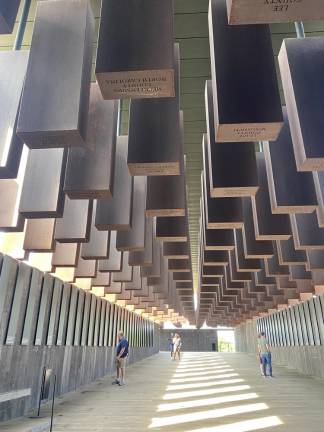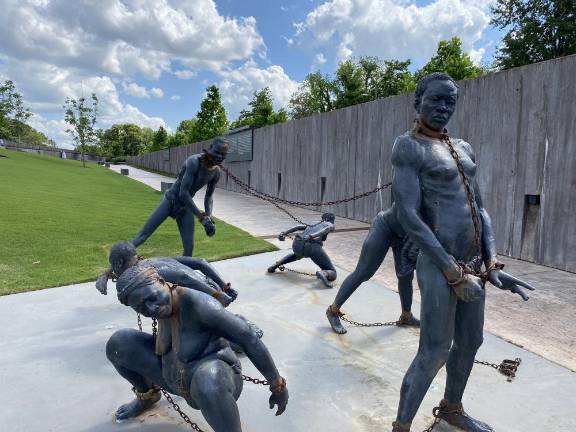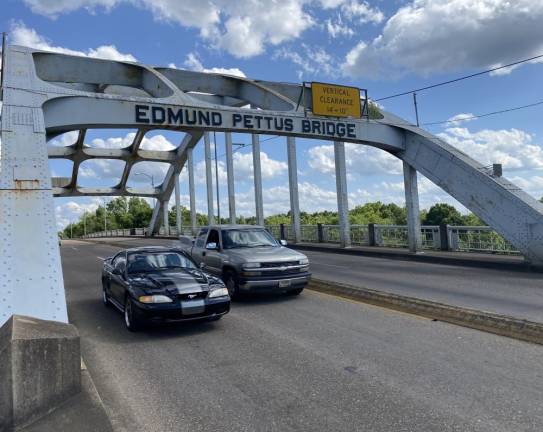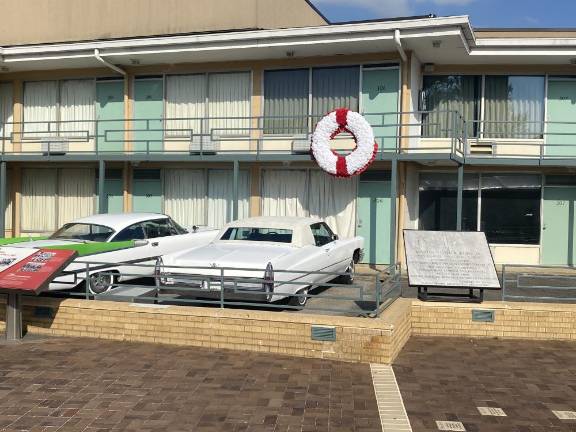Reflections On the Civil Rights Trail
A trip through history from Atlanta to Memphis




I just returned from a 10-day journey through a section of the country that has been designated as the Civil Rights Trail – a trip in time tracing the legacy of Martin Luther King Jr. and the movement to end racial segregation. It was a trip we had long planned with old friends who live outside of San Francisco but didn’t feel free to take until now because of the pandemic. They had driven cross-country and we met up with them in Atlanta, Georgia.
The occasional story I pen under the rubric of West Side Perspectives usually focuses on Upper West Side stories – the local unsung hero who is toiling to make our neighborhood a better place, or the social issue, e.g., homelessness, which impinges on our daily lives and defies an easy resolution.
So connecting a visit to the sites of this historic movement to the Upper West Side might seem like a stretch. Yet, as we visited the myriad civil rights museums and descriptive markers along the way, I couldn’t help but think about how important it is (and how lucky I was ) to leave my familiar neighborhood and take in the history that still plays out in today’s divisive world. The debates over the Black Lives Matters movement, the 1619 Project or the twisting of Critical Race Theory to undermine our country’s history of racism, were foremost in my mind along the trail.
“Birth to Death” Tour
With limited time, our jaunt began in Atlanta and we traced a path from Montgomery to Selma to Birmingham, Alabama and on to Memphis, Tennessee. I ruminated that it was the “birth to death” tour – from King’s birthplace to his untimely death on the balcony of the Lorraine Motel in Memphis.
It’s hard not to underscore the powerful image of staying on the block in Atlanta’s Old Fourth Ward, three doors down from the house where King was born and lived until he was twelve. The National Parks Service has preserved much of the immediate area that is also home to the Ebenezer Baptist Church and the MLK Jr. National Historic Park.
A week later we were standing below the balcony of the Lorraine Motel outside room 306 where King was staying. He had decided to step outside to get a breath of fresh air after a long day supporting the Memphis sanitation workers and their strike. The day before, King had given his famous “Mountaintop” speech where he spoke of the possibility of his own death. King was alongside Andrew Young, Jesse Jackson and Ralph Abernathy when the shot was fired that felled him.
I couldn’t help but envision that iconic photo of them pointing from the balcony to where the gun was allegedly fired by James Earl Ray from a bathroom window across the road where he had rented a room. (The National Civil Rights Museum in Memphis – a must see –has a legacy wing that still questions whether James Earl Ray was the one who fired the shot.)
Throughout the trip, I was struck by the images of the violence of the segregationists and the bravery of those who risked their lives resisting the Jim Crow laws. In every city we visited, there was a civil rights museum with video footage, text and photos of the struggle and ensuing movement to rid the country of the heinous racial practices embedded in those places. I found the repetition to be a very powerful tool that reinforced the injustices suffered and the persistency required to create a movement for change.
Equal Justice Initiative
The most impressive site was the Legacy Museum and National Memorial for Peace and Justice (in memory of 4,000 documented victims of lynching) in Montgomery, created by the Equal Justice Initiative under the leadership of Bryan Stevenson. The enormous space, built on the site of a former cotton warehouse where enslaved Blacks labored, has been effectively transformed into four distinct sections and exhibits – Slavery in America, Racial Terror, The Civil Rights Movement and Massive Resistance, and Mass Incarceration. There is a common thread of brutality, hate and violence but also of hope and courage that is captured as one moves through these different time periods. Still, one is left with the stark realization that we have much work to do to bring about fairness, justice and even a semblance of equality in our country.
Along the route, there was no dearth of historical references to events of that era. Before Rosa Parks there was Claudette Colvin who was arrested at the age of 15 for refusing to give up her seat to a white woman. According to the shop owner of a store we stumbled upon on the corner where the bus boycott began in Montgomery in 1955, Ms. Colvin was just let off of probation for that act 67 years later at the age of 82. To some, she was the real heroine of the boycott even if Parks (an heroic leader in her own right) received all the notoriety.
There were many depictions of The Freedom Riders – a mix of Black and White activists – who traveled across state lines to bring attention to the segregated bus terminals. One of their buses was bombed in Anniston, Alabama. A second group of riders was beaten by an angry white mob when they arrived in Birmingham. This brought national attention to the cause and forced the Kennedy administration to send 400 federal marshals to protect the Freedom Riders and force the Interstate Commerce Commission to desegregate interstate travel.
We toured other iconic places: the infamous Edmund Pettus Bridge in Selma where in March, 1965 John Lewis was beaten unconscious as he tried to lead a walk from Selma to Montgomery for voting rights; the 16th Street Baptist Church bombed in September, 1963 where four young girls were killed (Birmingham Sunday); Ingram Park across the street from that church where Public Safety Commissioner Eugene “Bull” Conner used attack dogs and fire hoses on demonstrators.
Many of the neighborhoods where these monuments to the civil rights movement stand tall remain poor and segregated. The plethora of homeless people sleeping outside on Auburn Avenue in Atlanta (a stone’s throw from King’s birthplace) reminded me of the people we see bedded down on Broadway in our own backyard.
More horrifically, the terrorism of white supremacists, as witnessed most recently in the Buffalo massacre, illuminates the undeniable through line from the enslavement of Blacks centuries ago to the racism that still exits within our midst. This is a history that was embodied on the trail and should not be forgotten. It must continue to be told and move us to take collective action against such hate and violence.
Stephan Russo is a West Side Spirit contributor.